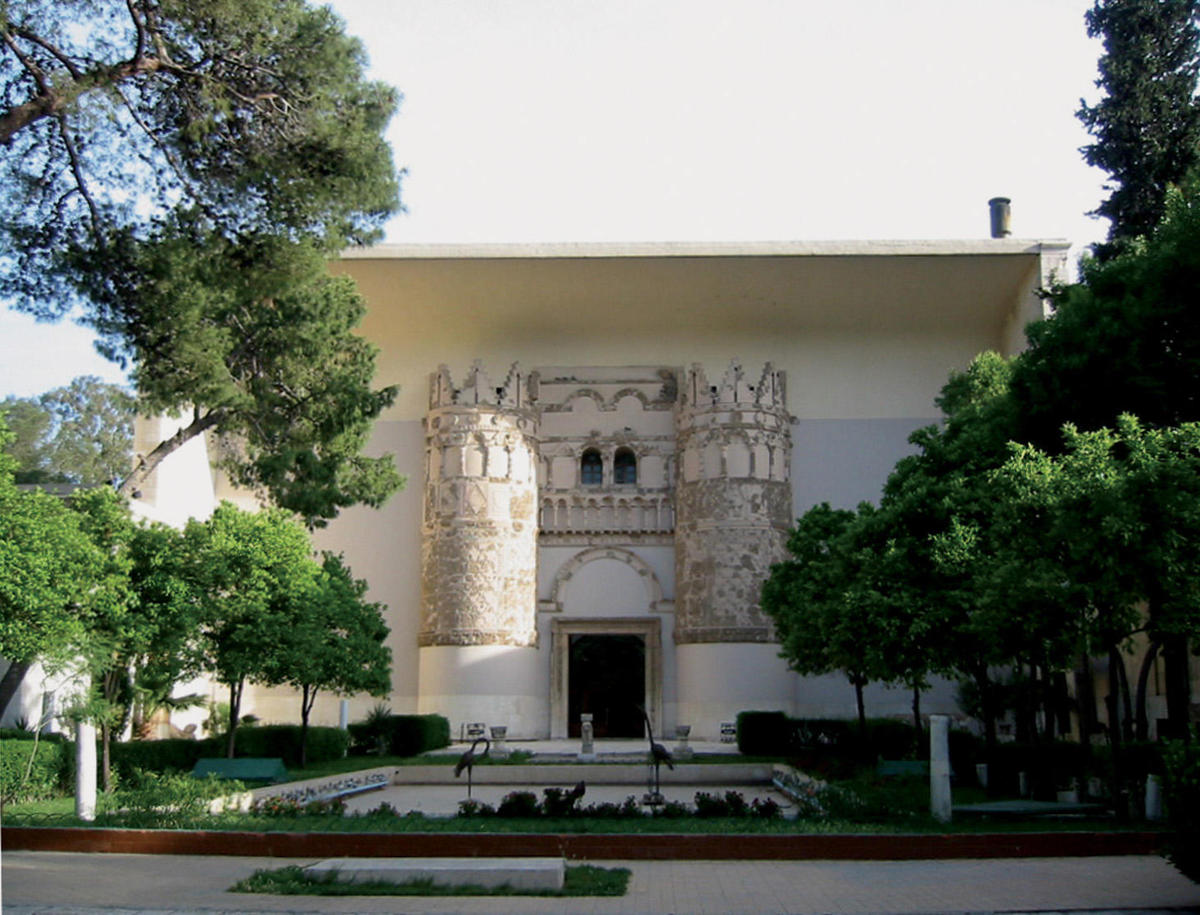
On a wall in Damascus a bush is burning. Suleiman, in his wisdom, advises the butchering of children to solve maternal disputes, and Abraham heads off up the hill to sacrifice his only son. Moses, meanwhile, has taken his shoes off and is breaking the golden cow before floating slowly along the blessed banks.
“All the colors are original,” says Rahsh Rahsh, aka Abu Mustapha, the man who for six years has watched over one of Damascus’s best-kept cultural secrets.
“In all the time I’ve worked here, not a single person has ever been allowed to take a photograph,” he says as we discuss the huge second century AD frieze tucked in a back room of Syria’s National Museum. The frieze was recovered from the ruins of a Jewish synagogue built at Doura Europos (now DeirEzzour), close to where the Euphrates flows into Iraq, and brought to the Syrian capital in 1935 by a team of French archaeologists.
Sensitivities aside (Syria is still technically at war with Israel), as with the majority of this maddeningly magnificent museum, the extraordinary frieze — an early example of the Christian impulse for graphic representation on Jewish religious art — remains entirely uncelebrated. With no signs to point the way, no label on the wall, and no light to illuminate it, we had only discovered the treasure by chance.
“Do you want to see the temple?” Abu Mustapha asks as we shuffle around the classical galleries, awaiting the return of the museum’s head curator, Monam al-Moathen. I needed her guided tour, for there are virtually no labels for any of the approximately five hundred artifacts on display and no reasonable guidebook to the museum’s varied delights.
“I can explain an artifact from the Mamlouk era, but not how our museum is going to become famous in the world,” says Moathen. “The museum is not free to publicize itself. All promotion is taken care of by the General Directorate of Antiquities.”
Perhaps the Syrian state is suffering an image problem abroad because it is not making the most of what it has at home. In the case of the National Museum, the wealth is almost limitless. The entrance itself is the gate from the south facade of Qasr al Heir al Garbi — a huge castle built during the Omayyad empire — rebuilt from thousands of tiny fragments over fourteen years.
Inside are classical mosaics: Apollo at his harp, singing the glory of the earth, and Philopolis dispensing truth. Also within are ceramics that were recovered in perfect condition from Shahba, an ancient Roman city founded by Emperor Philip the Arabian that is a half hour drive south of Damascus.
From the south are prehistoric statues, including one of Minerva, goddess of victory, carved from the famed volcanic basalt of the Huran. There is a second century marble Venus, its original gold necklace still hanging delicately from her neck, and large red ceramics from Greek potters who traded along the Syrian coastline.
Down some steps: a reconstructed underground burial chamber from the days when the warrior Queen Zenobia of Palmyra led her armies against the mighty advances of the Roman Empire.
Up the stairs and back in time two millennia, we find a skeleton from a grave in Syria’s eastern desert. Along the corridor is another hunk of basalt, actually a treaty drawn up between rival kings and carved into the stone in Aramaic, the language of Christ, which is still spoken in Maloula, a mountain village north of Damascus. There are gold, silver and copper coins from when Damascus was the capital of the Islamic Omayyad Empire, which stretched from Spain across North Africa to the western border of China.
Perhaps the highlight of the museum is a tiny clay tablet from the fourteenth century BC. Written on it are the thirty cuneiform letters of the world’s first alphabet — Ugarit. The letters run left to right, and the tablet is small, perhaps the world’s first pocket dictionary.
Moves are underway to improve the museum’s presentation and publicity strategies. Photographer Nicholas Randall has shot fifty of its finest artifacts from four eras — prehistoric, ancient, classical and Islamic — and a full-color guidebook is due out in the spring.
The museum is also teaming up with Paris’s Louvre, dispatching a French team to assist in the rejuvenation of the Oriental arts section of the museum.
This kind of barter deal, Moathen admits, is necessary — revenues generated by the museum can be used for the museum itself rather than swallowed by the state Directorate.
Despite these efforts, the journey out of the wilderness for Syria’s National Museum will require something on the scale of a Biblical sea change.
“I ask many people in responsible positions in the country whether they have been to the museum,” says Moathen. (Admission to Syria’s national treasure trove costs the equivalent of $0.30 US.) “They say, ‘Yes, I came with school one time.’”